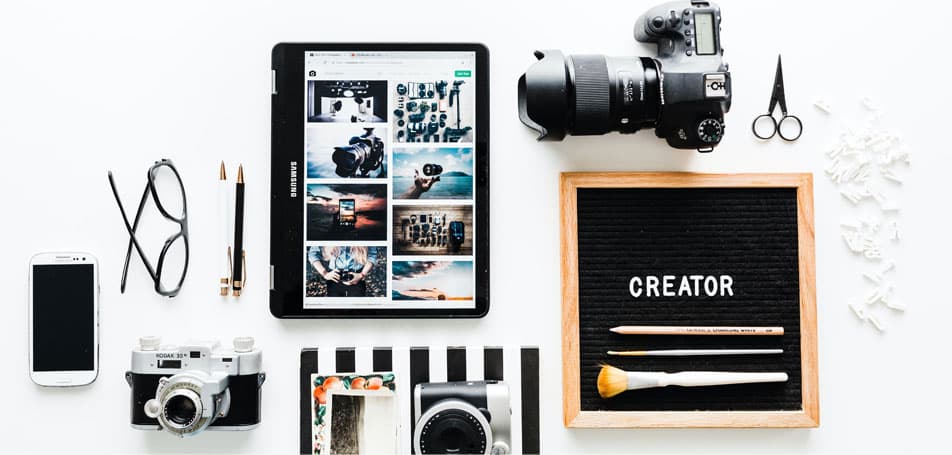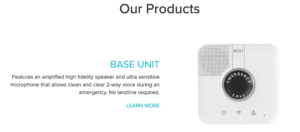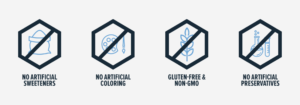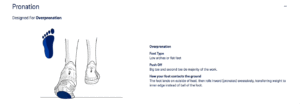
There’s no question about the impact web design can have on the success of your eCommerce business. Research has consistently shown that aesthetic factors like the color scheme, layout, and visuals on your site influence web visitors’ trust, on-page behavior, and even conversion rates.
But what happens when you have to choose between two visual directions for your site, like illustration vs. photography?
Does one perform better than the other on eCommerce websites? And is it even necessary to opt for one, or can you combine them to create better visuals to describe your brand and products?
Let’s find out.
Why Photography Works
There are many benefits to using photography on your website.
First and foremost, photos are easy to process. According to research from the Massachusetts Institute of Technology, it takes the human brain less than 13 milliseconds to identify an image. Moreover, photos are memorable, boost SEO, and improve overall user experience
But, the most prominent advantage of using photography on your eCommerce site is that photos make for the perfect medium of emotional marketing – that is, eliciting reactions in web visitors for the sake of encouraging them to make a purchasing decision.
So, it’s only logical that photos make for an excellent tool for conveying concepts and messages. And the thing is, they’re not just good at showing off physical products. They’re also great for establishing brand identity, providing trust signals, or encouraging a connection between a business and its target audience.
Where Illustration Performs Better
Unfortunately, however, photos aren’t always the best choice to use on eCommerce sites. While they provide a lot of detail and can communicate intricate messages, they also have a few shortcomings.
For example, when showing complex subject matters, photos tend to provide too much detail. That makes them either too difficult to understand or simply not attractive enough.
This is where illustration comes in as the superior choice.
As an example of intentional, purpose-driven visual design, an illustration can describe concepts and products with sufficient detail. And, it can do this without drawing focus away from the main selling point or value.
Moreover, illustrations are better suited for eCommerce websites going for a minimalistic look, as well as for instances when the target audience isn’t adults but children.
How to Use Illustration vs. Photography to Achieve Your eCommerce Goals
Now that you know the pros and cons of using photography vs. illustrations, we can get into the best ways to choose the type of visual you’re going to include on your eCommerce website.
Trustworthy Product Descriptions
The elementary rule of designing a high-performing online store is that you want to optimize it for expectation management, user experience, and trustworthiness. This is why, for product descriptions, you will almost exclusively want to use photography.
Seeing how photos show off your products “as is,” giving consumers an idea of what to expect, they’re the ideal format for ensuring that your buyers are actually happy with their purchase (and ideally turn into long-term customer ).
For example, check out how this photo of how a GetSafe medical alert device works together with the accompanying text to describe each feature to the target audience.

Source: getsafe.com
It efficiently shows off the components, gives users an idea of what they can expect in terms of aesthetics, and the text provides additional info about connectivity and technical details.
Making Complicated Concepts Simple
If your goal isn’t to show off your products but to describe complicated concepts (tech processes and scientific data), then you’ll generally do better with illustrations rather than photos.
As you can see in the screenshot below from Transparent Labs, a supplement manufacturing brand won’t necessarily want to show photos of ingredients included in its products. Instead, it will want to make things as straightforward as possible, sending a clear message without overwhelming its website visitors.

Source: transparentlabs.com
Another great way to use illustrations instead of photos on eCommerce websites is to describe processes. For example, the coffee brand Grind decided to use these types of visuals to illustrate how its subscription service works.

Source: grind.co.uk
Yes, Grind could have chosen to take photos of each stage of the ordering process. However, it would have taken much more website real estate to show those off, and the results would not have been better. So, going the illustration route was the best decision in the given situation.
Setting a Tone
Lastly, if you’re considering the benefits of illustration vs. photography for the purpose of branding, you’ll find that both options have their fair advantages.
Photography works best for evoking emotions and appealing to your target audience’s sentimental side. For example, an eCommerce brand specializing in the sales of ecological household products like Homestead Supplier will probably fare better by using photos that display its target audience’s desired lifestyle.

Source: homesteadsuppler.com
But, if your idea is to appeal to people’s rational sides, an illustration might work better. For example, ASICS uses a GIF to describe pronation on its product pages, knowing that a drawing will do a much better job of communicating the product’s purpose than an overly detailed image.

Source: asics.com
Final Thoughts
Although both photography and illustration have their pros and cons, when using them in eCommerce, you need to take the time to determine what you stand to gain by adding either of them to your site.
Sometimes, you will find that one format works better than the other. But others, you’ll realize that the way to get the best possible results is to combine them.
So don’t be afraid to experiment. Your aim is to make design decisions that are true to your branding, and you alone have the insights into what works best for your audience.













